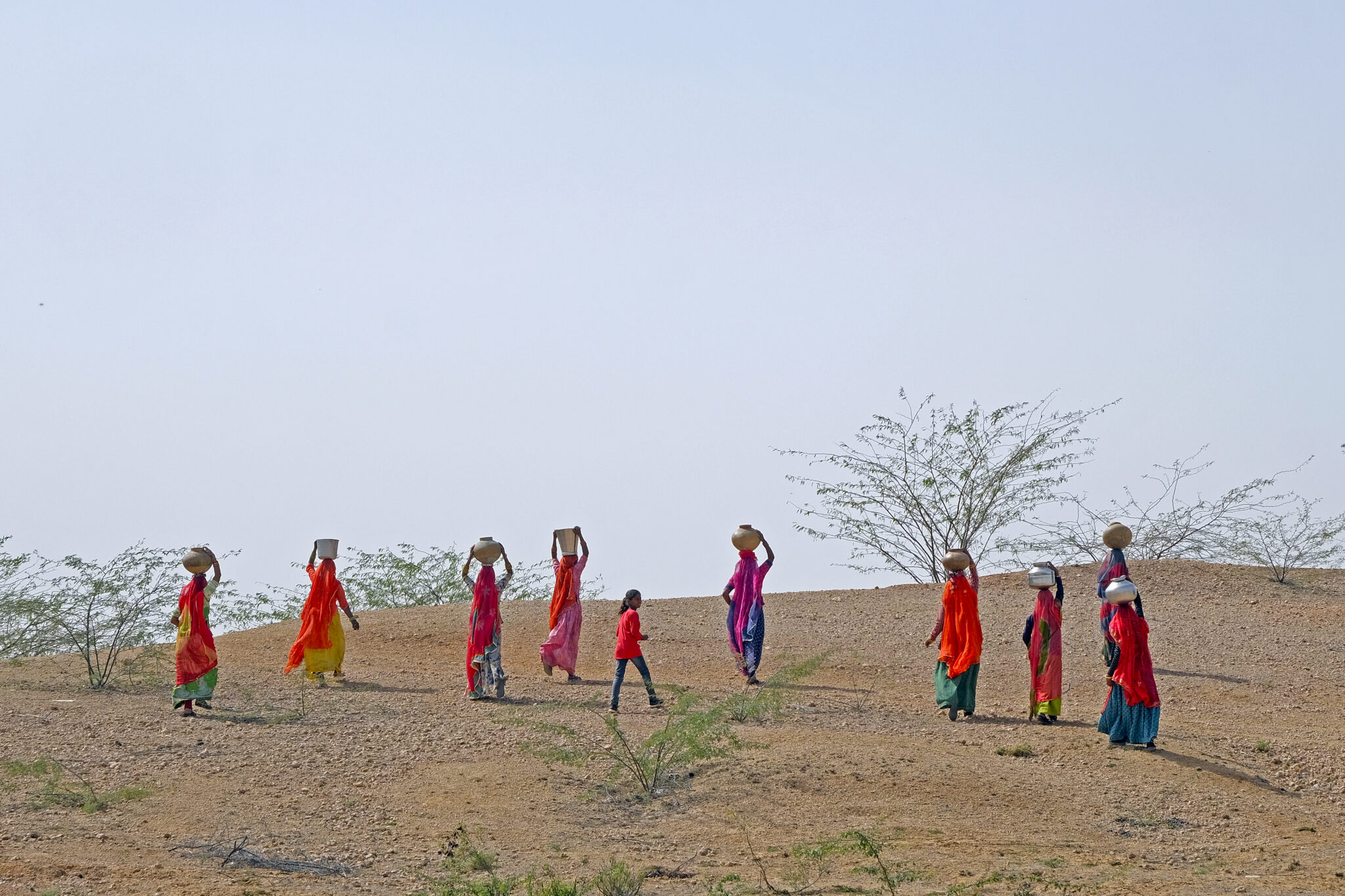The Thar Desert region of India in the State of Rajasthan is the most densely populated desert ecosystem in the world. This region experiences extreme weather conditions and water scarcity that has severely impacted the lives of the population, who are largely dependent on agriculture and animal husbandry for survival. While perennial droughts have always been an issue that people living in deserts have faced, climate change has manifested in the unpredictability and shifts in the rainy seasons in recent years. Fortunately, desert peoples’ local ingenuity offers food security solutions despite the drought.
Gramin Vikas Vigyan Samiti (GRAVIS), is a non-governmental organization working in the states of Rajasthan, Uttarakhand, and the Bundelkhand region of Uttar Pradesh, India, to bring change by pioneering innovative need-based development models and committed partnerships with the Government, non-profits, and community-based organizations (CBOs). GRAVIS strives to raise the standard of living of communities by offering local solutions that blend traditional community knowledge with modern science and are financially viable and sustainable in the long run.
A Q+A with GRAVIS
Agroecology Fund had the chance to explore grantee partner GRAVIS’s work a bit more deeply in a recent interview. Learn more about their compelling work in the following Q&A:
How does your work on drought mitigation impact food security?
Since its inception in 1983, GRAVIS has been working to support marginalized communities by building their capacities to resolve community challenges and enabling them to take charge of their own lives.
The Thar Desert is one of the most challenging climatic zones in the country. Inhabited predominantly by farming communities largely dependent on rain-fed agriculture and related activities, the desert has witnessed recurrent droughts, acute water shortages and food scarcity. Whereas extreme weather conditions are not new to the desert, the occurrence of climate change has aggravated the extremities, making it impossible for communities with limited resources to lead a healthy life with sufficient food, water and nutrition. Extreme variabilities in rains and weather have resulted in reduced ability of farmers from the region to produce sufficient food with land degradation, rapid groundwater depletion and decreased soil quality.

Solutions rooted in nature can restore land as well as resolve issues around natural water storage. GRAVIS’ program strategy focuses on nature-based solutions to improve the living conditions of people in the region and strengthen their ability to respond to recurring droughts and changing climate while safeguarding the biodiversity, improving health outcomes, and bolstering food as well as water security. Simple and low-cost technology is employed effectively to enhance water storage and utility for mitigating negative impacts of droughts. Some of the areas of intervention introduced by GRAVIS include:
Fostering rainwater harvesting systems to enhance water and food security
Community ponds or naadis are surface based rainwater harvesting basins that can store between 700 cubic metres and 40,000 cubic metres of rainwater and provide water for up to eight to 12 months of the year. The revival and maintenance of community-based resources is extremely important to ensure accessibility and availability of water for all residents, including children, women, older persons, and others belonging to the poor and vulnerable sections of the region. In the long run naadis contribute immensely by recharging the groundwater supplies as well as providing water to the livestock for drinking purposes. Considering this, GRAVIS has worked towards desilting of the ponds and building embankments around the ponds to ensure safe and secure storage of water. The naadis have emerged as an important lifeline for the residents and livestock of the Thar and have empowered them to be self-reliant, self-sufficient and climate resilient.
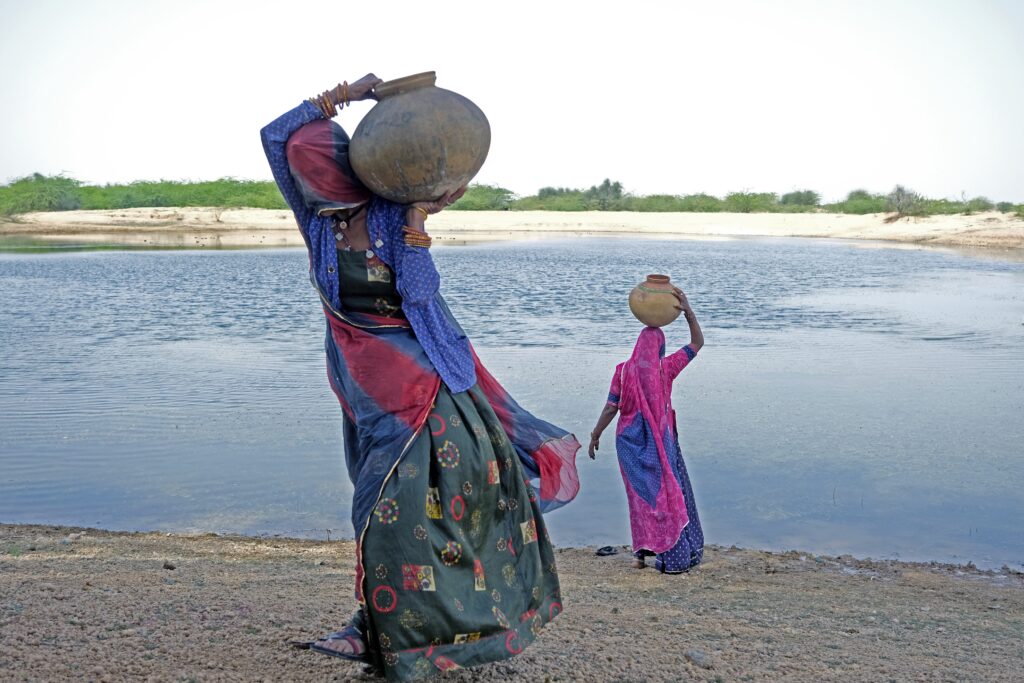

It becomes extremely important to capture rainwater and store it in a clean and safe manner in regions hit by frequent droughts. Taankas or underground water storage tanks are useful, easily constructed, accessible and sustainable storage units that can store up to 25,000 litres of rainwater. A single harvest of rainwater can be stored for as long as four months and the water stored in these units can be used for fulfilling domestic needs of communities.
The Taankas are built at an elevated level of one foot and are also equipped with a fool-proof locking mechanism to ensure that it is safe from any form of infestation. These units have been extremely useful in ensuring convenient, uninterrupted access to clean water. Built very close to the households of the beneficiaries, women do not have to spend hours of their productive time securing water. Extracting water from Taankas becomes less laborious and less time consuming, enabling women to devote the additional energies and resources towards themselves, their families, and the community. Most importantly, this intervention has also contributed to enhanced household savings, which can be utilised for health care, education and other important priorities. Taankas help ensure water security and quality for households. The chances of contracting water borne diseases has been significantly reduced with the establishment of these structures.
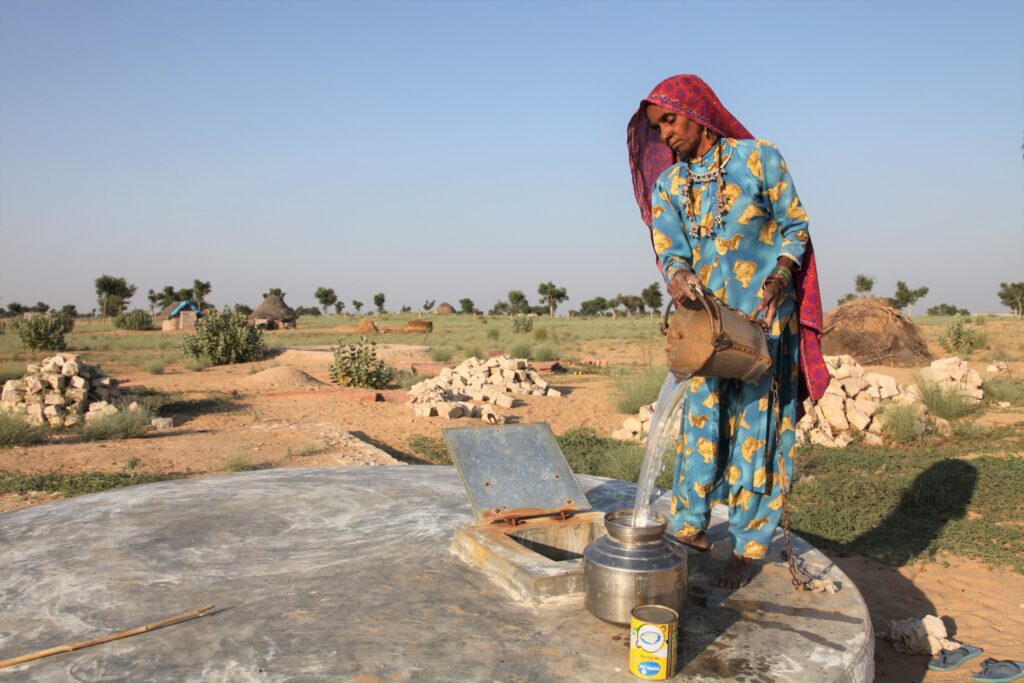
Enhancing food and nutrition security by rejuvenating the barren desert lands:
Relying extensively on traditional knowledge, wisdom and techniques to ensure food and water security, GRAVIS has promoted the construction of khadins or farming dykes. A khadin is a traditional earthen embankment made out of soil at the end of an upland plot of land to prevent water run-off, that serves as a method of collecting water. This method was developed in Jaisalmer hundreds of years ago; however, it continues to be an effective and sustainable method for improving soil moisture. In the absence of adequate and consistent rainfall, khadins serve the dual purpose of retaining moisture from rainfall, however scanty it may be, while also protecting the top layer of soil from run-off water. The technique has restored several barren lands and has transformed them into cultivable lands, paving way for a viable source of livelihoods.
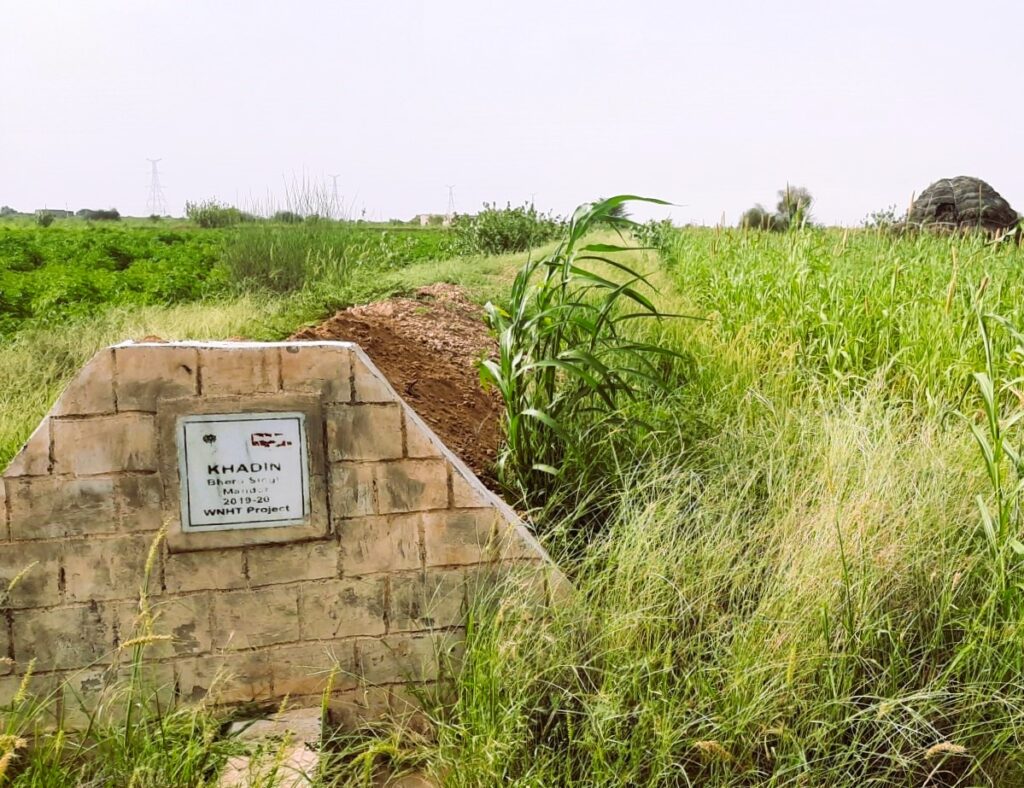
The construction of khadins has ensured nutritional security, especially for those belonging to the poor and vulnerable sections of the Thar. Another important component of this multi-dimensional strategy is the establishment of AHUs (Arid Horticulture Units). In lands where agriculture is no longer viable, AHUs are a very useful alternative as they are not labour intensive, require very little maintenance, promote self-reliance, are self-sufficient and sustainable. The AHUs are similar to small kitchen gardens that can be used to grow nearly thirty plants in one season and offer a myriad variety of benefits for families, with its fundamental objective being to achieve food and nutritional security, combating the nutritional deficiencies especially in children, women and older people. A typical AHU promotes the use of local seed varieties, which is crucial to climate adaptation and building climate resilience. The plants grown in these lands follow inter-cropping practices, require small quantities of water and are grown entirely using bio-pesticides. These units have changed the food and nutritional security situation in the Thar region for the better by making a diverse set of seasonal fruits, vegetables, and greens available. These fruit and vegetable crops can survive extreme weather, can be grown with limited water and are affordable sources of nutrition.
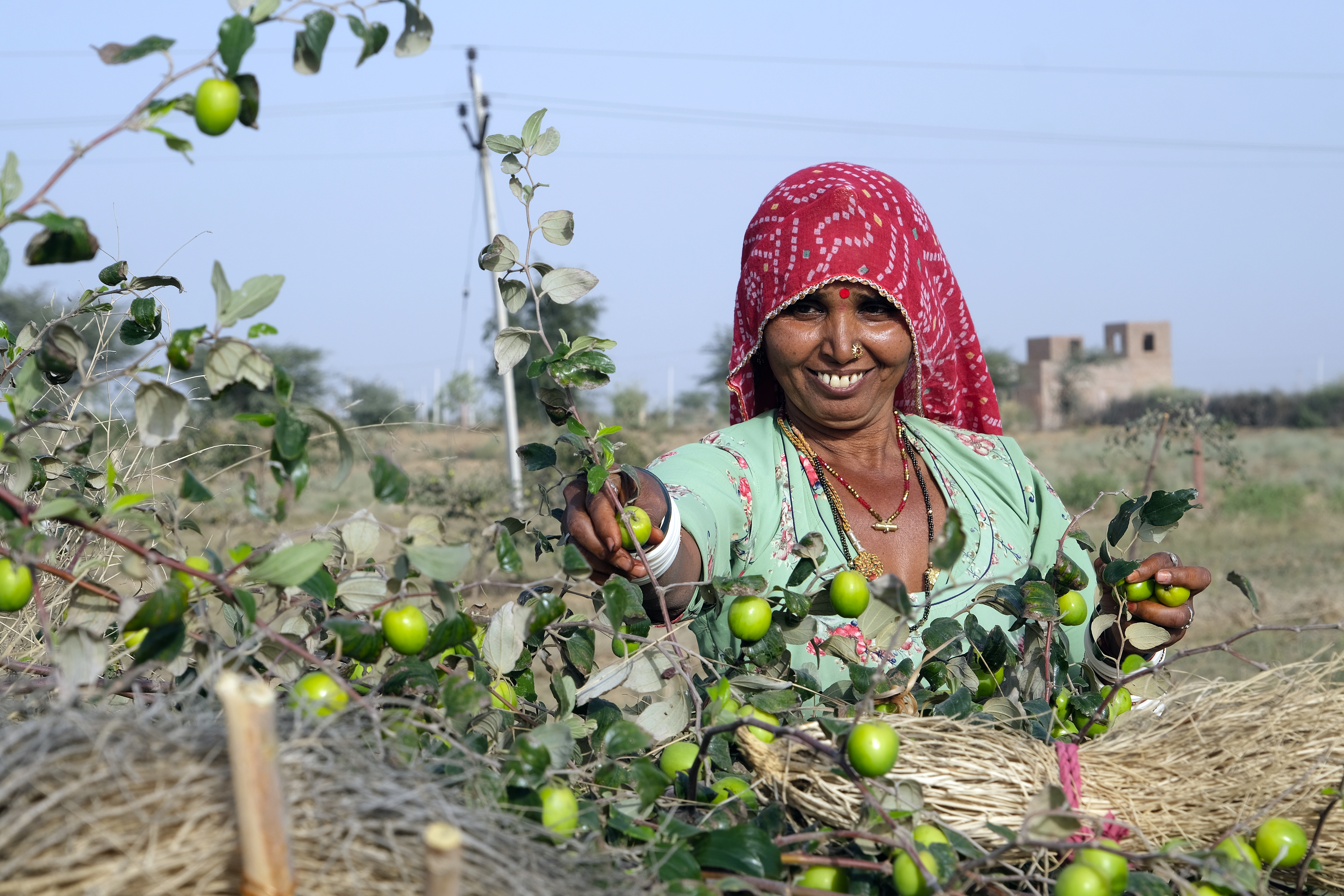
GRAVIS also promotes farm forestry practices that involve integration of trees into farming systems. This practice is beneficial to both farmers and the environment. It improves soil health by reducing erosion, while increasing soil organic matter and nutrient availability. Above all, it supports the resilience of farming communities against climate variability and rampant environmental stresses such as drought and soil degradation.
Water scarcity impacts lives and cultures in many different ways. How does it impact women specifically? How does Gravis’ work address the inequity? As climate change leads to more drought conditions, how are women farmers in the Rajasthani region working to combat the impacts?
Land is the most important resource for communities inhabiting the Thar desert in the State of Rajasthan. While the land resources are abundantly available in the region, recurring droughts, scarcity of water, sand erosion and salinity add to the woes of poor farmers. When water is scarce and land is degraded, women, children and older people are often the most impacted. With minimal rain, water is insufficient even for household use, drinking and livestock, which leads to a large share of time spent by women in fetching water from long distances. The time spent fetching water limits their time on self-care and opportunity for education. For many women this non-stop drudgery starts when they are as young as four. Every aspect of their life, be it schooling, health, safety, economic opportunity, pregnancy and childbirth are impacted by the lack of access to clean water. These problems and challenges multiply in cases of older women as they continue to face years of oppression and gender imbalance deeply rooted in the social and cultural norms.
At GRAVIS we bring women of the Thar desert together and support them to lead a variety of drought mitigation and climate change adaptation initiatives. They are an integral part of the process of designing and implementing programs. With the backing of women-led community-based organisations like Self Help Groups (SHGs), Village Development Committees (VDC) and Intergenerational Learning Groups (ILGs) women are building community resilience and leadership through sustainable agriculture and water management practices, both are solutions that can work efficiently to reverse the impacts of climate change.
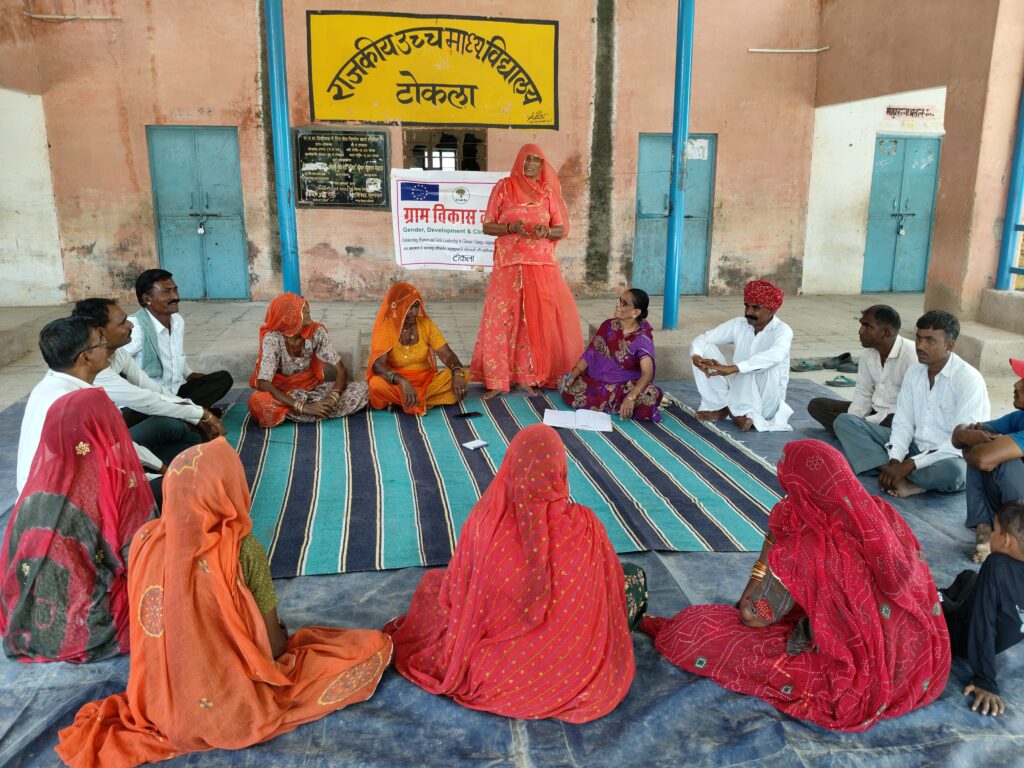
GRAVIS also invests significant resources in developing the leadership skills and capacities of women by providing learning spaces on subjects like community development—highlighting the role of women and girls in disseminating information and awareness on health, education, menstrual hygiene, traditional agricultural practices, seed management, water storage and cleaning techniques, income augmentation, and more. This has contributed to a reduction in social hierarchies and inequalities that deprive women of control over fundamental resources, while restoring their self-respect and social status in the society.
Food Security and Drought Mitigation Efforts
The Agroecology Fund proudly supports GRAVIS’s food security and drought mitigation efforts. With our support GRAVIS has been able to implement:
Khadins (Farming Dykes)
The construction of khadins in five drought stricken villages, benefiting 35 households (280 people) from the most impacted rain-fed farming communities. In the first year this initiative has already achieved a 35-40 % yield increase including drought resilient crops like green gram (Moong), Moth beans (Moth), sesame (Til) and millet (Bajra), cluster beans (Guar), mustered (Sarson), chickpea (Chana), and sorghum (Jwar). The Khadins also support natural vegetation and many shrubs like melon, cucumber, citrus fruits and desert plums, adding to the region’s biodiversity.
Community Seed Banks (CSB)
Availability of good quality seeds during the farming season is very challenging in drought prone villages. A CSB is a community facility in which all local farmers have deposited seeds and are provided seeds at the time of need. A total of 10 such CSBs (2 in each village) have been established. Seed banks ensure all community members can receive seeds on time even with no investment, with the agreement to return seeds post harvesting with an interest of ¼ of seeds produced. It has reduced the dependency of farmers on local vendors and money lenders.

Agroforestry Units
In an area of about 8 hectare, over 2,000 plants were planted and are managed through community norms. This unit will become an important source of vegetation cover, fodder and fuel for the entire community. The plantings included Gunda , Ber (ziziphus), Pomegranate, Drum sticks, Khejri (Prosopis cineraria) and Kumat (Acacia senegal). The survival rate of the planting was 80 %.
Setting up Rain-fed Arid Horticulture Units (AHUs)
35 AHUs were established, benefiting 280 people from 35 families. This effort provided vulnerable communities with nutritious food in a sustainable manner.
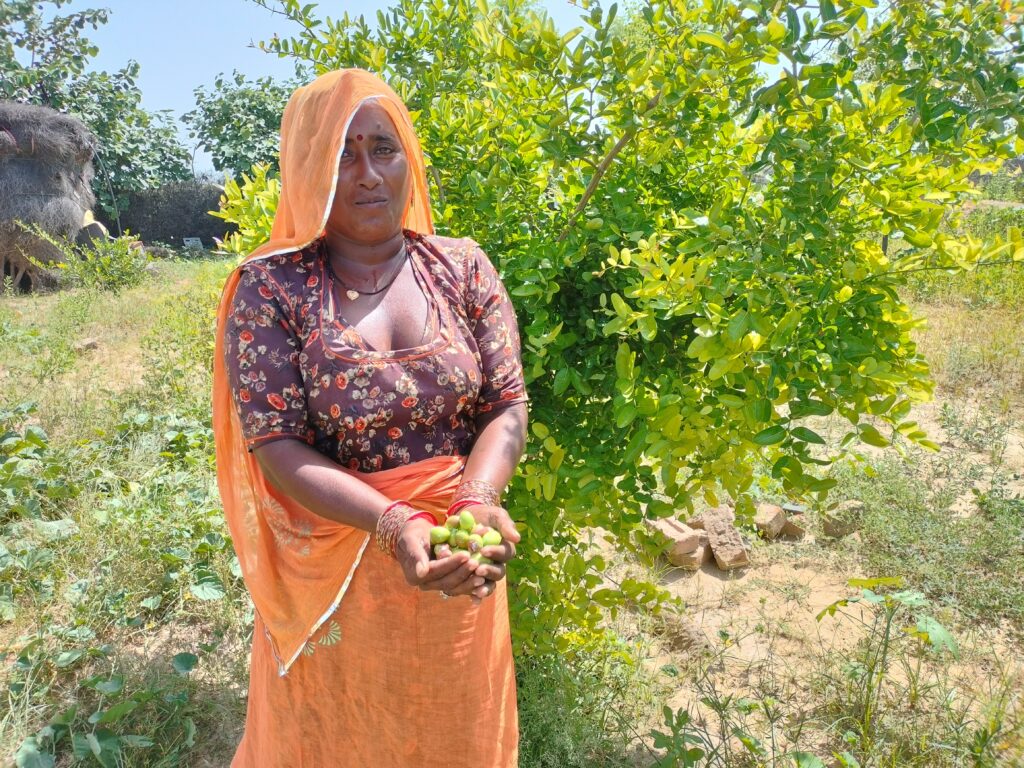
Technical Trainings and Learning Exchange
Ten trainings were organized to enhance the technical knowledge of farmers on rain-fed and organic farming practices. Along with technical trainings, 10 women’s self-help groups (SHGs) and 10 Village development committees (VDCs) have been organized. These trainings focused on project leadership, monitoring and sustainability of the project. Women have also been training on financial literacy.
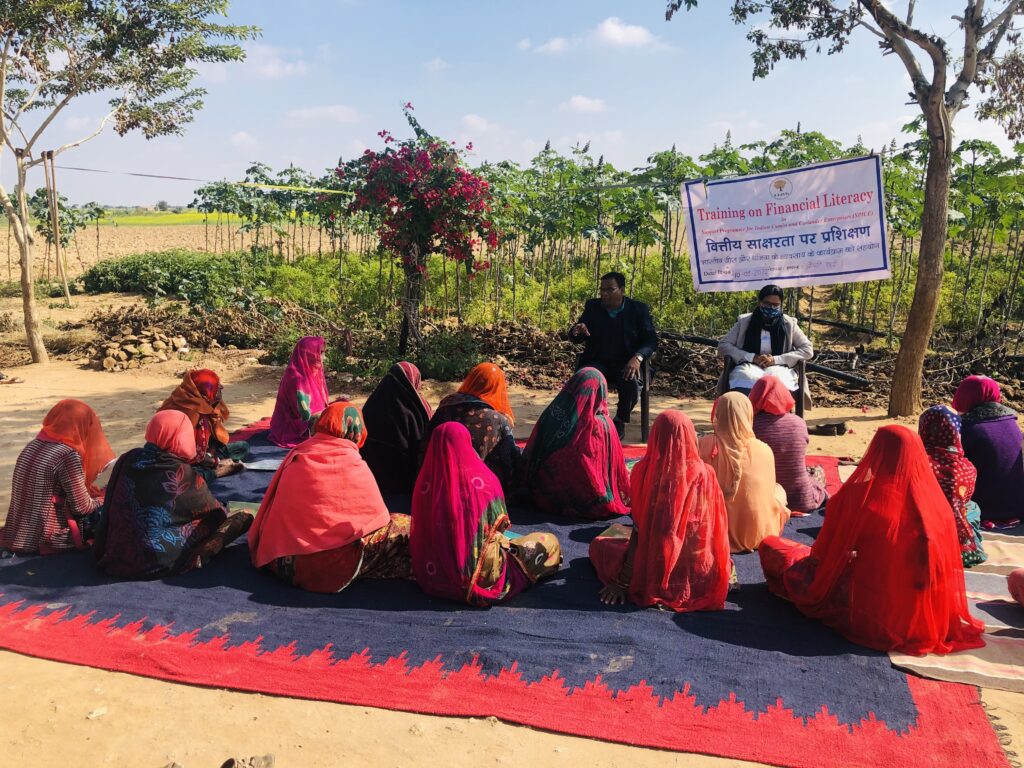
Learn More
GRAVIS has a rich resource of research papers and studies documenting processes, learning, and practices that highlight issues, solutions and strategies as outcomes of its various multi-pronged interventions. These resources are shared to stimulate learning and to encourage replication in other arid regions of India and across the world.
